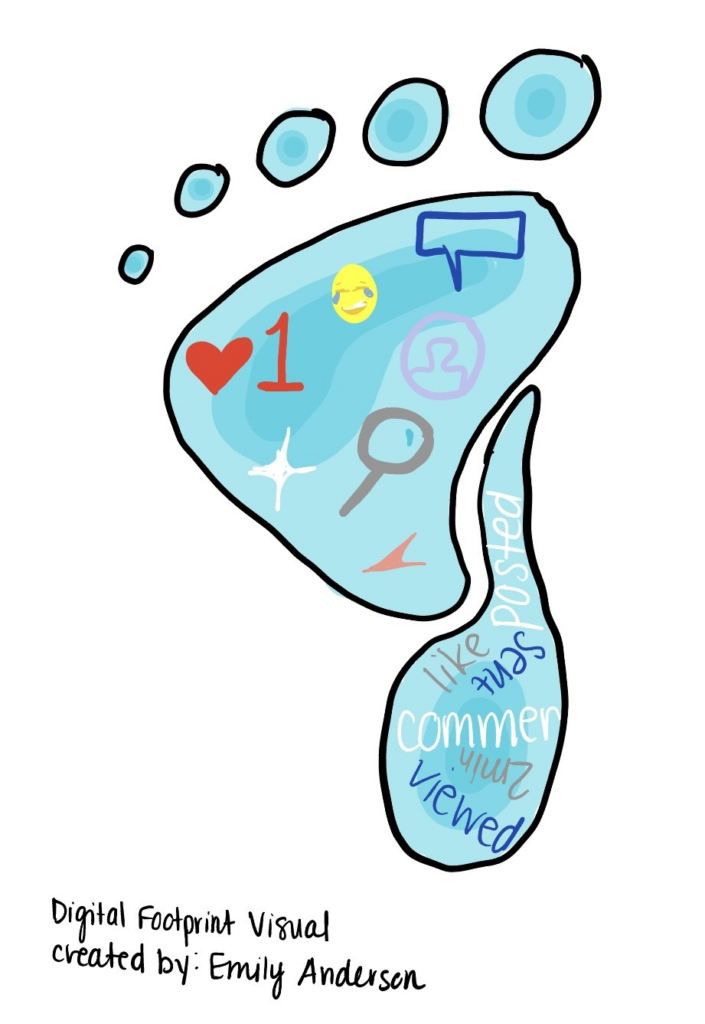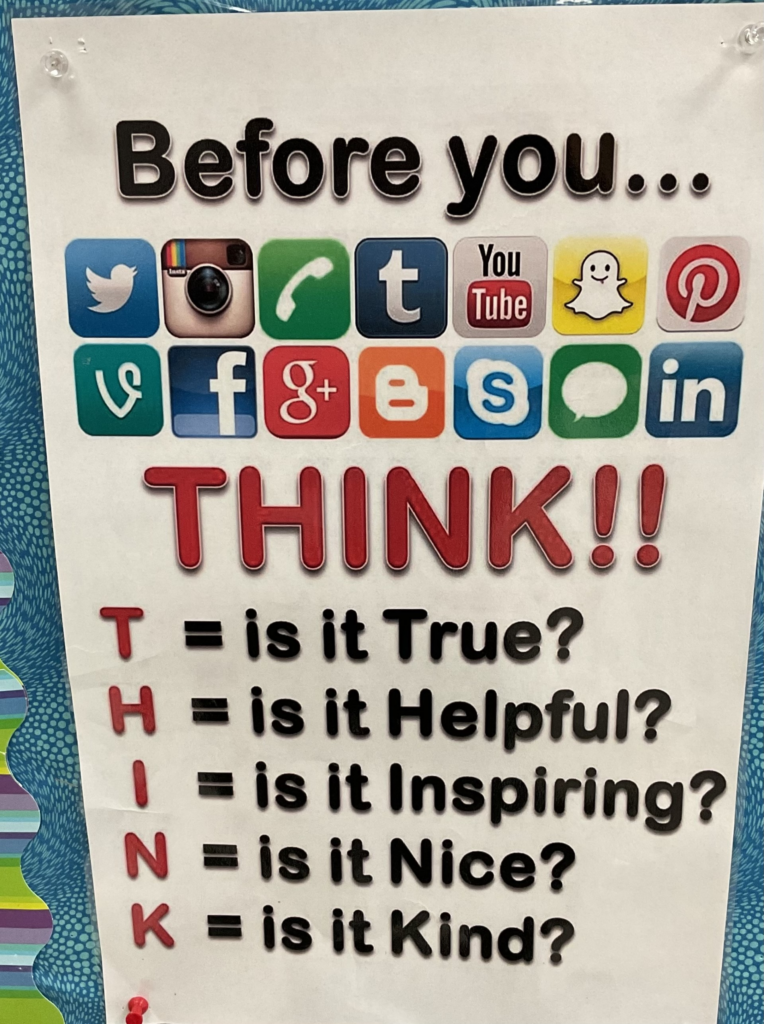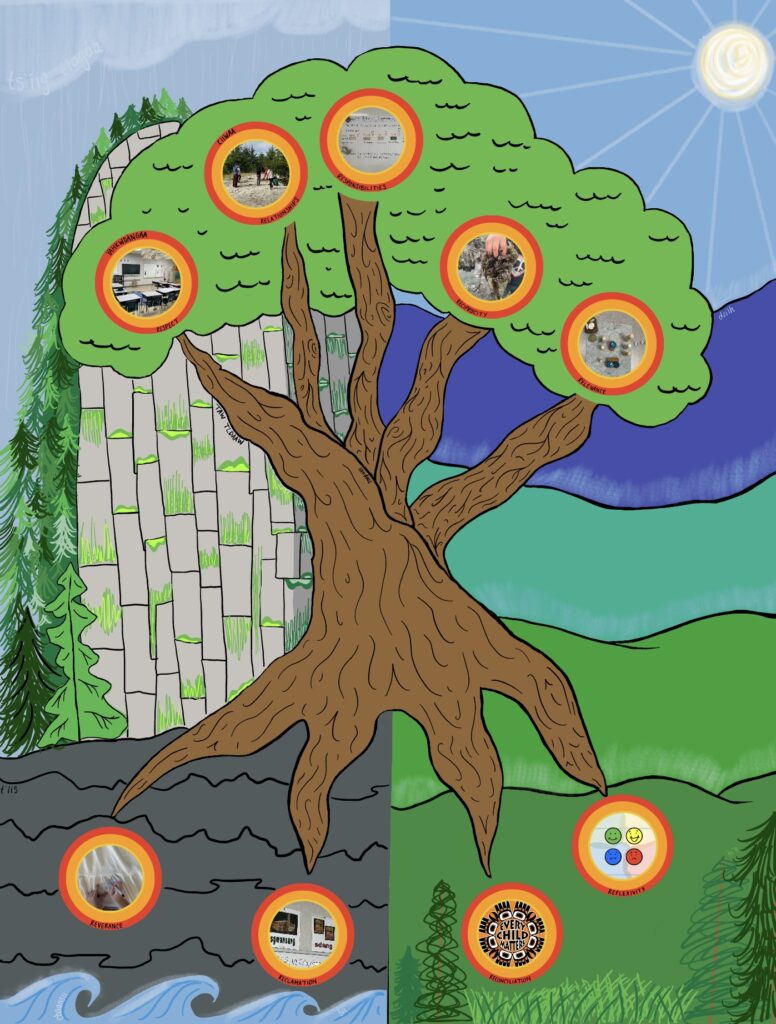Digital Footprint
A major objective in the realm of education is to prepare our students to take on the “real world”. In this day and age our world revolves around technology. It is critical that we equip our students with the necessary tools to identify their digital footprint and be able to manage it in an appropriate manner.
Yesim Surmenlioglu defines a digital footprint as “the process of creating and storing all transactions in the digital environment”. (Surmenglioglu, 49). What we are releasing onto the internet says something about who we are as people whether this is intentional or not. One might consider someone coming across our online profile as an “early introduction” before we have formally met our friends, employers, and colleagues.

We may believe that whatever we have searched, sent, or posted will be erased with the click of a button, but it is important for students to note that this is not the case. Surmenlioglu’s study demonstrates that a majority of students had a limited understanding of their digital footprint and little awareness on how to protect themselves online, meanwhile teachers must feel competent in these areas to be able to educate sufficiently. (Surmenlioglu, 57). According to Alexis Lauricella, many teachers do not feel as though they have the skills or experience to equip their students with knowledge surrounding their digital footprint (Lauricella, 3). It is crucial for an “awareness…[to] be raised in digital environment users so they [all] can use these environments consciously.” (Surmenglioglu, 62).
Technology is inevitably going to play a major role in our future; therefore, it is important to educate ourselves on how to use it to our advantage. Digital footprint in general is a driving force behind social change and interpreting the culture that comes along with these changes is essential. (Surmenglioglu, 49). As teachers it is easy to focus on the distractions that technology in the classroom can bring about, but we do have an opportunity to harness these distractions and create space for innovation. Giving students resources and opportunities to learn how to use technology in a beneficial way gives them a tool they can take with them beyond school walls. In addition to facilitating creativity, we must educate students on the positive and negatives associated with the impacts of having a digital footprint and what this may look like.
The highest chance of success for our students comes from the community collaborating. Education on digital footprint and its impact will require something of all of us. I found this resource that I thought was a great introductory piece to get us thinking of what it means to have a digital footprint.
Conversations surrounding our digital footprint is becoming increasingly relevant in our world today. If it is relevant today it will undeniably relevant when our future students are through with the K-12 system. To conclude this post, our digital footprint is everlasting. This is something that we must be aware of moving forward. What we release onto the internet is interpreted as an extension of who we are. It is important to ask ourselves and ask our future students, “if a stranger were to com across my profile what would they think? Does this accurately represent who I believe I am? Would I lose out on my dream career because of something I posted?” Are the things I choose to share, send, or post potentially harmful to others?

Works Cited:
Lauricella, Alexis R., Herdzina, Jenna, & Robb, Michael. “Early Childhood Educators Teaching of Digital Citizenship Competencies”, Computers and Education, 2020, 158.
Miller Beth. “What to Know About Instructing Teachers and Students on Digital Citizenship, Digital Footprints, and Cybersafety”, American Library Association, (2016), vol. 44, no. 4, 23-29.
Surmenglioglu, Y, & Seferogiu S., “An Examination of Digital Footprint Awareness and Digital Footprint Awareness and Digital Experiences of Higher Education Students”, World Journal on Educational Technology: Current Issues, 2019, vol. 11, no. 1, 48-64.






